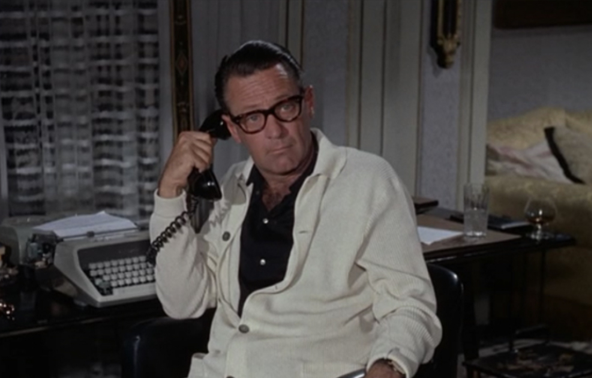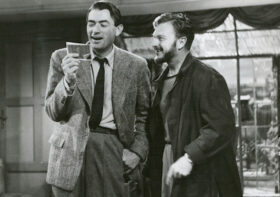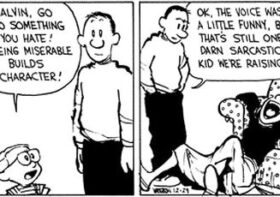Under-Appreciated Style Icons: William Holden in Paris When It Sizzles

More than thirty years before Jude Law’s Dickie Greenleaf sauntered into our collective sartorial heart, there was another carefree (and, arguably, more authentic) cinematic playboy soaking up the Continental sun and showing us exactly how to pull off that specific kind of European cool, provided someone else is footing the bill, of course.
I’m talking about William Holden’s character of Richard Benson in the delightfully absurd and universally panned 1964 comedy Paris When It Sizzles, who is the subject of our latest installment of “Under-Appreciated Style Icons”.
This bizarre meta story about a struggling screenwriter and his waifish muse sees Hollywood heavyweights Holden and Audrey Hepburn (and their two Academy Awards) reunite after 1954’s Sabrina which saw Holden’s character of David, as well as Holden, himself, once the cameras stopped rolling, fumble a prime Hepburn (fresh off her Oscar win for Roman Holiday).

The rumor was that Holden and Hepburn were having an affair during Sabrina but she broke it off when she realized he couldn’t have children due to his vasectomy. There was also the eensy-weensy problem of Holden’s debilitating alcoholism, which would eventually kill him.
Maybe knowing the reality of Holden’s personal demons is what makes viewing Paris When It Sizzles a bit sad.
Holden’s Benson is seen drinking almost continuously throughout the film (even during the movies-within-the-movie detours), which is one of the main reasons why he hasn’t gotten around to even starting his screenplay two days before his boss is scheduled to arrive in Paris to read the final draft.
Enter Hepburn in all her 60s, bee-hived, wide-eyed pluck. She arrives at Holden’s hotel suite to type up the screenplay that she reasonably believes in already done, not realizing that she will become an integral part of its creation.
Honestly, the film is a bit ahead-of-its-time. It’s an industry send-up complete with fake title credits, storyline dead-ends, surprise monsters (yes, really), and big-name cameos (including Frank Sinatra, Fred Astaire, and a blink-and-you’ll-miss-it Marlene “I Already Cashed The Check” Dietrich).

The highlight of the film, even outshining Holden’s wardrobe, is the stellar Tony Curtis. Since this movie was made in the early 1960s, the “old guard” of Hollywood (like Holden) was being compared with the relatively new breed of method actors like James Dean and Paul Newman who gained popularity riding Marlon Brando’s sweat-soaked shirttails. An aging and bitter screenwriter like Benson would have absolutely treated a member of that fresh generation of actors exactly how Benson treats Curtis: by never really giving him a name and criticizing him for talking too much.

Curtis (and his “wheat colored Levi’s”) is so playful and funny throughout that it’s impossible to not see glimmers of him in everything Ryan Gosling does now.
Due to the film’s sheer weirdness, it’s no wonder why it was critically eviscerated when it came out. I don’t think anyone had seen anything like it before and they certainly didn’t know what to think of it.
The poor reviews, though, don’t reflect some very good work done here by Holden, especially towards the end of the film when he admits to Hepburn’s Gabrielle that he was talented and inspired but is now just a hack who drinks too much.
With the power of hindsight we can feel the sincerity in the sadness of Holden’s lines, considering he was really, truly struggling with addiction during the making of this movie.
The first outfit we see Holden wearing is just after we, the audience, are informed that his boss will be traveling to Paris to read the finished screenplay within a matter of days. Hints are dropped that Benson has been having a liquor-soaked romp around Europe breaking lovely, young hearts along the way and doing everything he can to distract himself from completing any actual writing.
Fittingly, that first outfit of Benson’s is actually a deconstructed “night out” look. He is shown sunning himself on the deck of his hotel suite, shirtless, in… grey wool trousers, black socks, black velvet monogrammed loafers, and a slim dress watch (black leather strap, white face, roughly 36mm)… an unusually formal ensemble (minus the bare chest) at first blush, but logical once we realize he probably didn’t change out of what he was wearing the night before and probably hasn’t been to bed.

When he steps inside, he pops on a black, button-front, short-sleeve shirt (worn open, naturally) and black, thick-rimmed glasses.
It’s amazing how you can instantly casualize an outfit with nothing more than greasy hair, hangover eye-bags, and an ever-present Bloody Mary!

This first outfit is quite stark against the glitter of sunny France and provides an even more evident juxtaposition as soon as the luminous Gabrielle, songbird in hand, flutters through his door.


This initial outfit provides the visual base on which Benson builds several other looks throughout the film, including one he wears in the manifestation of one of his original screenplay ideas. In this segment, we get a glimpse of how this outfit (or something similar) probably looked twelve hours prior before he headed out for an evening of debauchery. His trousers, socks, and shoes are similar, as is his shirt, although he has buttoned it up and added a black, silk tie. The shirt provides almost no contrast against his jacket and tie. It’s quite a drab combination, which is an appropriate representation of how dry Benson’s imagination has run at the start of the film.


Benson really hits it out of the park, though, when, instead of a jacket and tie, he adds a chunky, cream cardigan to his monochromatic shirt and pants, as he and Gabrielle polish off a decadent dinner-for-two (and about a case of wine) after, ostensibly, brainstorming ideas for their screenplay but actually laying the groundwork for their romance. The light-colored sweater indicates Benson’s blossoming imagination (and hope) due to Gabrielle’s influence.


On day two, we see Benson, intellectually and spiritually jazzed from Gabrielle’s company, swap out the black shirt and cream cardigan combination for a loosely-woven, short-sleeve polo shirt.

Visually, the polo is essentially a short-sleeve variation of the cardigan he wore the night before, just without the heft. He has also eschewed his black socks for white ones. It’s as if Benson is slowly shedding his dark snake skin.

As Benson and Gabrielle wrap up their screenplay at the eleventh hour, Benson gives Gabrielle the aforementioned drunken monologue about being a has-been. Gabrielle leaves as Benson falls asleep and meets up with her Bastille Day date (a missed opportunity for one more Tony Curtis appearance, in my opinion, although that would have clashed with the more somber tone of the film at this point).
Benson awakens, comes to his literal and figurative senses and pursues Gabrielle to tell her how much he loves her, how he’s turning over a new leaf, etcetera, etcetera. The outfit he dons for this task is his simplest and most conventional of the whole film: same grey trousers, black socks and shoes, but combined with a white, button-down collar shirt, what looks to be a burgundy-and-black-striped tie, and navy blazer.

He has actually combed his hair for the first time in the whole movie and there isn’t even a glimpse of chest hair! This outfit shows us that Benson is ready to get back in the game, rejoin the land of the living (or at least the land of “not drinking at 9am”) and tap back into the creativity and optimism that made screenwriting a joy for him in the first place.
Benson then chucks his shite screenplay into the drink and tells Gabrielle that they’ll write a new, even better one together, reinvigorated by his new outlook on life.
They kiss and the screen fades out, as we are so helpfully told by the onscreen direction in the film’s final gag.

What strikes me about Holden’s wardrobe throughout this film, that I mentioned in the first paragraph, is how authentic it feels. Maybe it’s because we know Holden was an alcoholic, but it feels like he just showed up on set in his open shirt and velvet loafers, nursing a little hair-of-the-dog and the director was like “Whatever, just roll camera.”
It makes his final ensemble feel so hopeful! We’re all rooting for him to get his life sorted out and what better way than to splash some cold water on your face, put on a crisp, white shirt, and cinch up your tie?
Holden’s wardrobe also feels more authentic than Jude Law’s Greenleaf did in The Talented Mr. Ripley (as I mentioned earlier) because while Greenleaf looked like he got dressed IN ORDER to look good (mission accomplished, certainly), Holden’s Benson doesn’t look like he is necessarily dressing for anyone. He is too preoccupied with his looming deadline, and his ever-dwindling cocktail level, to really care who sees him in what. It’s that insouciance under the circumstances that infuses Holden’s attire with the elusive “sprezzatura” that can’t be faked.
So, if you’re in the mood for a delightfully silly film featuring leads with sparkling chemistry, keep your expectations low and give Paris When It Sizzles a try.
If nothing else, you’ll get some style inspiration for the next time you need to pilot a bi-plane or outrun a vampire.



